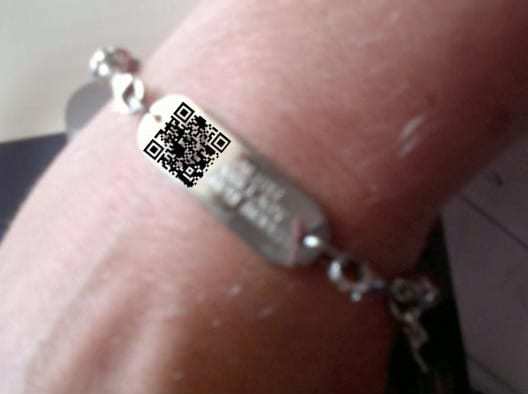A startup from Boca Raton is using quick response codes to help users in an emergency situation.
Following a trip to Louisiana in which a man named C.J. Wilson witnessed a situation in which emergency workers were trying to assist a man who had collapsed but didn’t know what medications he may have been using, a startup was formed for using QR codes to provide first responders with a patient’s medical history.
This way, paramedics will be able to scan the barcodes to know what medications a patient is using.
The startup is called My QR Life Codes. It uses standard QR codes to make it possible for a person to share their medical history with paramedics, regardless of whether they are lucid or even conscious. The program became publicly available in November. Wilson explained that “When they need medical help, we get those records and observations to the people who need them.”
The information is securely stored on a private server but can be accessed by scanning unique QR codes.
 Each member is assigned a QRcode that is designated exclusively for his or her information. It is printed onto any of a number of options such as stickers, bracelets, wallet cards, shoe tags and other options. This allows each user to decide exactly what information they want to share with paramedics and in what way they would like to make it accessible.
Each member is assigned a QRcode that is designated exclusively for his or her information. It is printed onto any of a number of options such as stickers, bracelets, wallet cards, shoe tags and other options. This allows each user to decide exactly what information they want to share with paramedics and in what way they would like to make it accessible.
Potential information that can be added to the information includes prescriptions, other medications that are being taken, allergies, medical conditions and history, emergency contacts and more. Wilson pointed out that “You don’t know where you’ll be, or when you’ll need these services.”
By making these QR codes available to paramedics, they can scan the barcodes quickly and easily upon arrival at an emergency scene so they don’t need to depend exclusively on receiving the information from the patient him or herself, or other people who are present at the scene. While it is possible to carry this type of information on a printed card, it means that any time the patient changes medications or learns of a new allergy, for example, a new card would need to be printed out. In this way, the information can be kept up to date and always in the same place, without having to replace the card, tag, sticker, or bracelet. Moreover, it means that a great deal more information can be shared, as space is not limited to the physical object.
